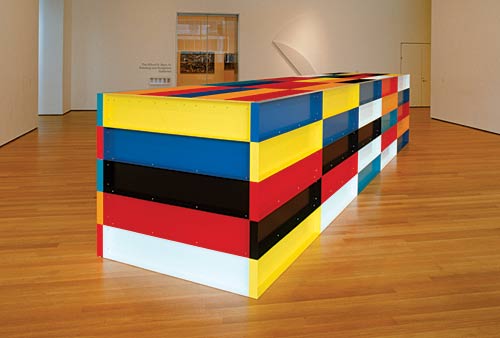American Hardwoods for High-Traffic Areas
The Wood Flooring Manufacturers Association (NOFMA) has developed a grading system that describes the appearance of hardwoods according to such variables as color, grain and markings. The grade of flooring is the primary determinant of how the floor will look once it is installed, sanded, and finished. Stains can be used to alter color but wood characteristics and other marks that determine grade can remain noticeable and are likely to remain after finishing depending on the color. The grades of wood are "clear," "select," #1 common, and #2 common. The first two grades have fewer markings and are more consistent in appearance than the "common" grades, which may have a variety of markings. Unfinished NOFMA-certified flooring in any of the four grades -clear, select and two common grades-will result in a serviceable floor. The primary differentiator between the grades is the degree to which natural characteristics or manufacturing marks are allowed, and the average length.
Types of Wood Flooring
Solid Wood Flooring
"Solid wood" means that each flooring piece is made from a single piece of wood. Each exposed part is made of pieces of genuine hardwood and nothing else.
Solid wood flooring comes in three basic types:
- Strip flooring accounts for the majority of installations. Strips usually are 2-1/4 inches wide, but also come in widths ranging from 1-1/2 inches to 3-1/4 inches. They are installed by nailing to the subfloor.
- Plank flooring boards are at least 3 inches wide. They may be screwed to the subfloor as well as nailed. Screw holes can be covered with wooden plugs.
- Parquet flooring comes in standard patterns of 6-inch x 6-inch blocks. Specialty patterns may range up to 36-inch square units. Parquet often achieves dramatic geometric effects of special design patterns.
Solid wood flooring expands with changes in a facility's relative humidity-which can be addressed during installation by proper acclimation, environmental control and field expansion, if necessary. In addition, expansion gaps between the floor and the wall are necessary in the event of excess water.
Engineered Wood
Engineered wood is made of several layers of different woods or
different grades of the same wood stacked and glued together under heat and pressure to form a single plank. Several layers of veneers can be stacked with every other piece placed in opposite directions-an arrangement that makes the engineered wood resistant to expansion and contraction to the same extent as solid wood. The finished plank is more dimensionally stable in width than solid wood. The top piece of wood can be made of any wood variety and will be less expensive than a solid wood plank from that same wood species. Engineered floors can be mechanically fastened, glued, or floated. Most products are pre-finished by the manufacturer. Engineered wood flooring reacts less to changes in humidity than solid wood, except for length changes.
Popular Species
Because of their durability and ability to withstand heavy wear and tear, certain hardwood species are a better choice for high-traffic flooring applications. Some of the most popular American hardwood flooring choices include:
Red Oak. The heartwood of red oak is a pinkish reddish brown and the sapwood is white to light brown. The wood is similar in general appearance to white oak, but with a slightly less pronounced figure due to the smaller rays. The wood is mostly straight-grained, with a coarse texture. Red oak machines well, nailing and screwing are good, although pre-boring is recommended, and it can be stained to a good finish. It can be stained with a wide range of finish tones.
|
White Oak. White oak heartwood is impervious to liquids, and has been used extensively for ship timbers, barrels and casks. The sapwood is generally light-cream colored and the heartwood is light to dark brown. White oak is mostly straight-grained with a medium to coarse texture, with longer rays than red oak.
At the Museum of Modern Art in New York, (MoMA) which averages some 2.5 million visitors a year, the choice for aesthetic, durable flooring was 120,000 feet of American white oak that blends with the glass and granite in the galleries. "With museums in general, the floor should be a backdrop, not call attention to itself. The less active the grain, the better," notes Roger Berk of Haywood-Berk Floor Co., which worked with MoMA on the floors. The oak was FAS grade ("first and second"), NHLA's clearest grade, which bears few if any knots or other natural marks.
The flooring used at MoMA was a 4-inch face by random 3-foot to 16-foot lengths, and 3/4-inch thickness, conventionally tongue-and-grooved. "Length was a major issue, because the gallery sizes are so large that, without the length, it would look very choppy and full of joints-very unattractive," says Berk, noting that one of the galleries is 17,000 square feet. After a year in service and two-and-a-half million visitors, not counting special events, Berk reported that the floor was "holding up quite well."










